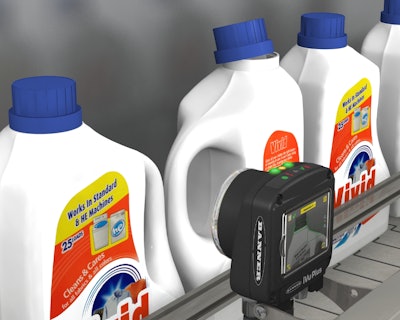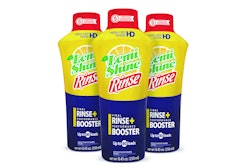
Packaging machine builders are meeting the needs of their CPG manufacturing customers for smarter, more flexible packaging machines by incorporating improved sensing and communication technology. Mark Lampert, business development manager for sensor manufacturer Banner Engineering, who talked to Automation World about how trends in CPG product marketing and quality control are driving improvements in packaging machines, provides additional examples of how a variety of modern sensors are affecting packaging automation.
Sensors for non-rigid packaging
“To accommodate diverse packaging demands from retailers without accumulating increased material and labor costs, vendors are saying goodbye to the regular slotted case and hello to shrinkwrapping, trays, pouches and bliss boxes,” says Lampert. “While lighter in weight and less expensive to ship, these packages sacrifice uniformity, flat edges and consistency—making the packages more difficult to control and detect.” Advanced photoelectric sensors and vision sensors with easy programming functions can help increase sensing capabilities and ensure the integrity of the package, he says.
Sensors for quality control
Vision sensors also aid in automating the packaging process by identifying incorrectly labeled packages, misaligned seals or other potential mistakes. Vision software, like Banner Engineering’s iVu Plus, can verify the correct label and ensure the date/lot code is legible. A package that does not meet inspection is automatically rejected and removed from the line.
“A cleaning product manufacturer that ships laundry detergents, fabric softeners and similar products across North America installed an iVu Plus TG sensor to help identify mislabeled bottles or bottles not properly oriented for packaging. The sensor’s powerful match tool was easy to set up, and enabled automated comparison of the bottles with an approved image,” says Lampert. “Bottles falling outside of specifications or with the wrong label were removed prior to packaging, reducing operator interventions and product returns. The sensor’s on-board display provided operators with at-a-glance inspection results—and enabled operators to pinpoint where failures where occurring and quickly fix any problems.”
Sensors for track-and-trace applications
The Food Safety Modernization Act (FSMA) put forth requirements that are impacting packaging automation. Track-and-trace documentation, critical control points, hygienic equipment design and safe machine operation during food and beverage packaging processes are influencing the evolution of smarter, safer packaging machines.
“The FMSA’s track-and-trace is directing manufacturers and suppliers to efficiently verify, and document they are putting the right product in its designated carton, as well as tracking both domestic and imported products from origin to the retailer,” says Lampert. “By automating these processes through the use of barcode readers, vision sensors and smart machines that are able to communicate and store performance data, manufacturers and suppliers can reduce production time and ensure regulatory compliance.”
To help a leading pharmaceutical manufacturer comply with its track-and-trace responsibilities, an iVu Plus BCR barcode reader was installed to monitor individually-sealed pouches. Each pouch has a 1D barcode encoding the product’s identification. Before the product can be shipped, the iVu validates the correct barcode is on the pouch.
Sensors for washdown conditions
To meet guidelines set forth by the FSMA and other regulatory bodies, components that may come in contact with food or pharmaceuticals during packaging are also seeing enhancements in hygienic design, says Lampert. Sensors, like Banner’s QMH26, feature smooth stainless steel surfaces and self-draining housing shapes to minimize contamination risk.
“In addition to reducing waste due to actual or uncertain contamination, a packager can lower maintenance costs and lost production time by installing sensors that can withstand repeated exposure to high pressure, high temperature wash downs without being compromised due to chemical compatibility or water ingress,” says Lampert.
LED lighting matters too
LED lighting also plays an essential role in delivering safer packaging machines and inspection areas, says Lampert. “LED lighting is being used to illuminate the underside of the tablet filling machines. During product changeovers, the bright LED illumination aids operators who are inspecting the underside of machines for unaccounted tablets to prevent cross contamination. LED lighting can also be used to illuminate the inside of cartooning machines to help operators monitor processes and keep production lines running smoothly,” he says.
Because they do not have glass bulbs that require large, expensive enclosures, LED lights can be used in small spaces—like the inside of a packaging machine. LED lighting used in these applications must also survive the harsh cleaning environment in food manufacturing.
Banner’s WLA product, developed for harsh environments, includes encapsulated work lights coated in optically clear polyurethane, making them resistant to cleaning chemicals and shock and vibrations, says Lampert. IP69K rated, they can handle frequent machine wash down procedures. “With a life span of 50,000 hours or more, they provide a significant improvement in efficiency over fluorescent lighting,” he adds.


























